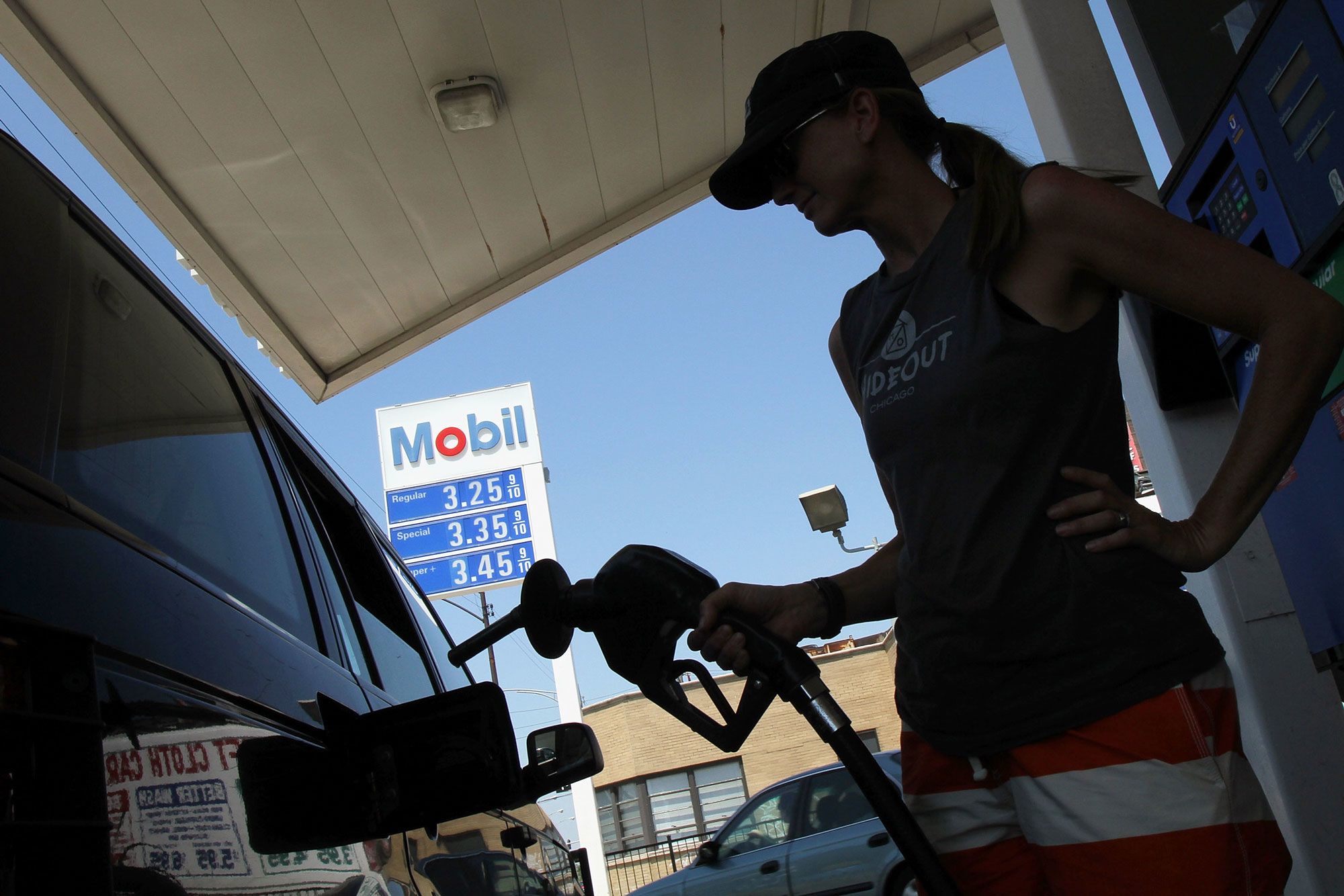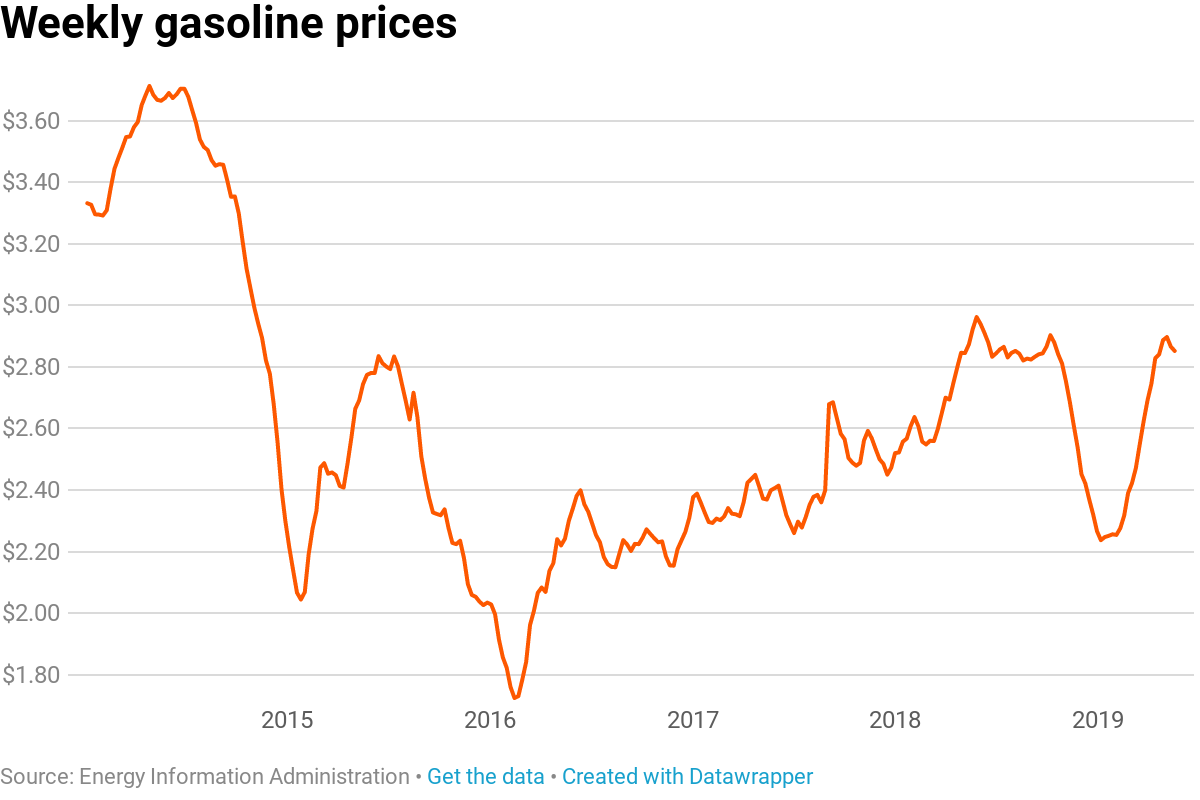Soaring gasoline prices peak just in time for Memorial Day weekend

[ad_1]
The biggest U.S. gasoline price surge in years is running out of steam just in time for the start of the summer driving season.
Heading into Memorial Day, the national average gasoline price is coming off the year’s high and sitting just above $2.80 per gallon.
The national average climbed 67 cents a gallon between New Year’s Day and May 4, when pump prices peaked, according to price-tracking firm GasBuddy. That’s the second biggest rise on record for the start of a year, trailing only the 93 cents per gallon surge in 2011.
It’s a similar setup to last year’s holiday weekend. Gas prices surged at the start of the year, but didn’t climb high enough to keep too many Americans off the road. Still, they’re well above levels in 2016 and 2017, when a depressed oil market gave motorists a big break at the pump.

“While the rise in prices has been steep this spring, perhaps the most important factor is that in many places, gas prices are still well below their all-time highs and perhaps even more importantly, over 50% of the nation’s gas stations are selling at $2.99 per gallon or less,” Patrick DeHaan, head of petroleum analysis GasBuddy, said in a press release.
Nearly 75% of Americans plan to take a road trip this summer, marking an increase from last year, according to a survey by GasBuddy. However, 38% of survey respondents — roughly the same as last year — say current gas prices will impact their travel decisions.
The cost of gasoline shot up this year as oil prices rallied roughly 40% through last month, bolstered by tighter supply and better-than-expected demand. Oil accounts for 50% to 60% of the price at the pump.
Drivers also found themselves paying more due to disruptions at the nation’s refineries, where crude oil is processed into gasoline, diesel and other products.
“Part of the run-up was due to the very high prices on the West Coast due to an extraordinary number of refinery outages,” said Andrew Lipow, president of Lipow Oil Associates “As those refiners have come back into service, we’ve seen prices dropping.”
Oil prices have plunged nearly 8% this week as the ongoing US-China trade war raises concerns about economic growth and fuel demand. But with Middle East tensions still simmering and threatening to push up crude costs, the national average gasoline price is likely to stay stuck near $2.80 per gallon, Lipow says.
DeHaan expects gas price relief to continue at least through the first week of June, with the national average settling in a summertime range between $2.65 and $2.90 a gallon.
Gas prices by location, source: GasBuddy
The regions likely to see the biggest declines are those with the highest gas prices: the West and East coasts and the Rockies.
Rising gasoline prices have been especially painful in California and states west of the Rockies. Refinery outages have helped push pump prices above $4 a gallon in California and above $3 a gallon in Western states.
“I think we end up cheaper as a nation, but that’s not much consolation for people in California that are going to be paying considerably more,” said Tom Kloza, global head of energy analysis at Oil Price Information Service.
U.S. stockpiles of gasoline are at the lowest levels for this time of year since 2015, but analysts say there’s enough fuel in storage to keep the country well supplied through the summer.
Barring a string of refinery outages or significantly higher oil prices, the onset of hurricane season is the next major threat to U.S. gasoline prices. The annual storm season poses risks to the U.S. refinery hub on the Gulf Coast in particular.
On Thursday, the National Oceanic and Atmospheric Association predicted a near-normal Atlantic hurricane season this year. NOAA forecasts there will be 9 to 15 named storms during the June to November period, with 4 to 8 hurricanes and 2 to 4 major hurricanes.
Source link





